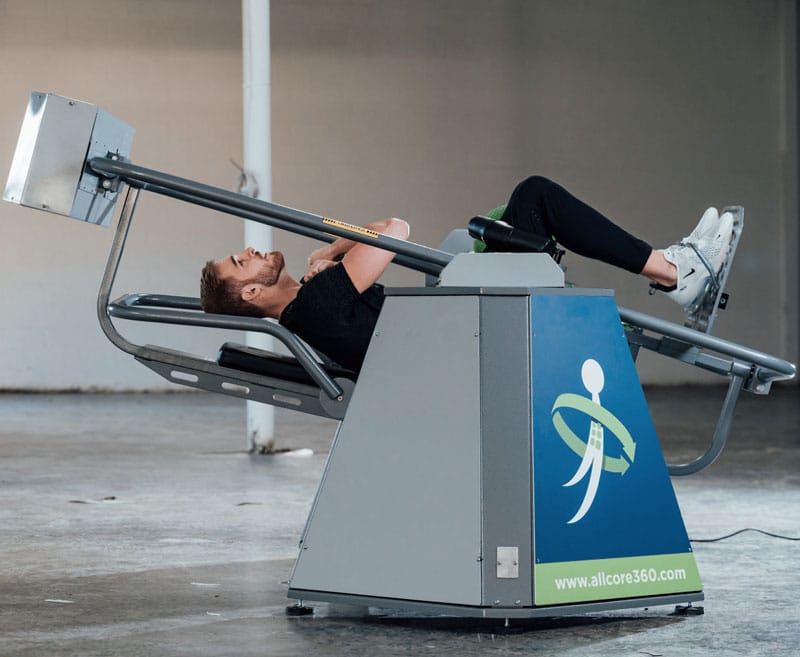The Roles of a Medical Fitness Specialist: Scope of practice, prevention and interprofessional collaboration
Physical activity has been demonstrated to positively affect over 30 chronic conditions and is considered the best deterrent of chronic disease in primary and secondary prevention. The main goal of a Medical Fitness Specialist (MFS) in the healthcare continuum is to prevent the onset of chronic disease and bridge the gap between clinical intervention and conventional fitness programs. This is achieved by developing exercise programs for those who have or are at risk for chronic disease or dysfunction, have health conditions that may be mitigated or managed by exercise and activity, are newly diagnosed with a disease and need exercise guidance, or have completed a medically supervised rehabilitation program and need to continue to progress. A fitness professional versed in medical fitness protocols, such as an MFS, can work with those who are at risk for chronic disease.

Scope of Practice
Scope of practice refers to boundaries set by knowledge, skills, and abilities (KSAs), as well as education, experience, and demonstrated competency, such as a program of study, or an exam to measure proficiency. A basic personal training certification suggests the holder can develop exercise programs for apparently healthy clients. Unfortunately, considering the overweight and obesity rate is near 70%, and 50%-60% of the adult U.S. population has at least one chronic disease, adhering to scope of practice becomes increasingly important, yet at the same time many fitness professionals may be providing services outside their scope of practice, and beyond their level of certification. By accepting a client, the trainer is proposing a safe workout will be developed and implemented, and the client will not be at risk of injury. If advice is given that is not within the trainer’s scope of practice, the trainer and the facility may be subjected to a lawsuit.
An MFS who integrates medical fitness into practice has the KSAs, based on education, experience, and demonstrated competency to conduct pre-participation interviews, perform fitness assessments, and design and implement health and fitness programs for disease management to avoid future injury and to improve activities of daily living. Unlike an MFS, unless otherwise educated, a fitness trainer who promotes medical fitness is not a licensed healthcare provider and does not possess the KSAs to diagnose an unknown condition, suggest supplements, design meal plans, physically touch a client or provide behavioral counseling.
Prevention
In the United States, medical care tends to focus on treatment rather than prevention. Whereas treatment is given for a diagnosed disease or injury, the goal of prevention is to avoid, improve or slow down the progression of a probable or possible disease or injury. Prevention can be categorized as primary, secondary, or tertiary. The goal of primary prevention is to foster a life of wellness and therefore avoid or reduce the chance of disease or dysfunction. Primary prevention includes immunizations, targeted types of exercise, balanced nutrition and wellness, and education programs. Secondary prevention is managing a symptomatic disease in the hopes of slowing down or reversing the progression. Examples include treatment for hypertension, asthma, and some cancer treatments. Tertiary prevention involves the management and treatment of symptomatic disease with the goal of slowing progression and severity, as well as reducing disease-related complications. Tertiary prevention includes treatment for late-stage cancer, coronary heart disease, and some types of rehabilitation to include orthopedic, cardiac, and pulmonary. Physical activity has been demonstrated to effectively treat over 30 chronic conditions, mostly in primary prevention but also in secondary and tertiary, making it the number one intervention against chronic disease.
Interprofessional Collaboration
Due to the growing incidence of obesity and chronic disease, leveraging the skills of various providers who can collaborate to deliver the best possible care, based on clinical needs, is necessary to manage the complex health care demands of a population with an increasing incidence of comorbidities. Due to a worldwide shortage of health workers, in 2010, the World Health Organization (WHO) recognized interprofessional collaboration as means to mitigate the global clinician shortage, strengthen health systems and improve outcomes. Interprofessional collaboration refers to health care teams, made up of trained professionals with various backgrounds, who work alongside patients and their families to provide high-quality care, based on the needs of the patient. Consequently, as medical providers begin to recognize the need to prescribe evidence-based exercise as an intervention in the management of chronic disease, MFSs, who are on the front line of health care, are trained and educated to be part of a clinical team that complements and leverages the strengths of each team member to improve population health. As health science and technology advance, it is imperative for fitness professionals who work with clients who have one or more chronic diseases to remain up-to-date on emerging fitness protocols. An MFS is required to participate in continuing education in areas including cardiopulmonary disease, metabolic disorders, and orthopedic dysfunction.
Although the scope of practice of many allied healthcare fields overlaps, the role of the MFS is to work with the client’s team of other healthcare providers, while staying within the scope of practice, based on KSAs. Regardless of the collaborative health team, the client’s physician is always the center, and as such should be provided regular updates as to the client’s progress.
An MFS is uniquely qualified to work with individuals within the healthcare continuum. Some KSAs associated with MFSs are:
- Knowledge of basic chronic disease pathophysiology
- The use and side effects of common medications taken by someone suffering from a chronic disease
- The knowledge to perform and analyze basic assessments related to movement and anthropometry
- The knowledge to design a safe and effective workout based on information received via assessment results, and the clinical recommendations from other healthcare providers
- FITT protocols, exercise progressions, and regressions
- The implications of exercise and activity for individuals with chronic disease
- Contraindications of chronic disease, and signs and symptoms of distress related to chronic disease
- Knowledge of signs and symptoms that require expertise outside of the scope of practice for medical exercise
- The ability to recognize a medical emergency
- Current CPR and adult AED are required
Personal Trainers & Fitness Professionals: Prevent & Manage Chronic Disease and Collaborate with Clinicians
Check out MedFit Classroom’s 20-hour online course, Medical Fitness Specialist. This course is designed for fitness and health professionals who want to learn more about using exercise as medicine with clients who suffer from one or more chronic diseases. As a Medical Fitness Specialist, you will be able to prevent and/or manage numerous chronic diseases and collaborate with clinicians.
For a limited time, save 40% on this course by entering coupon code MFNBLOG40 at checkout.
This article was featured in MedFit Professional Magazine.
Dan Mikeska has a doctorate degree in Health Science and a master’s degree in Human Movement, as well as certifications from NASM, ACE, the Cancer Exercise Training Institute and the Exercise Is Medicine credential from ACSM. He currently owns NOVA Medical Exercise and Medical Exercise Academy and is adjunct faculty for A.T. Still University’s Master of Kinesiology program.









 If fitness and exercise are well accepted as part of the management strategy for multiple diseases, why is it that access to organized exercise plans, and fitness professionals who can help implement those plans, are not a standard part of the medical treatment paradigm? Why is it not a standard benefit covered by common medical insurance policies?
If fitness and exercise are well accepted as part of the management strategy for multiple diseases, why is it that access to organized exercise plans, and fitness professionals who can help implement those plans, are not a standard part of the medical treatment paradigm? Why is it not a standard benefit covered by common medical insurance policies?

 I have decided to look at the bright side of this event, and see it as an opportunity. While many are not in my particular position, and are actually out of job and income due to this pandemic, I want you to reframe it. Change the paradigm of this being a negative, to this being a time for catching up, reflecting, and perhaps actually changing yourself.
I have decided to look at the bright side of this event, and see it as an opportunity. While many are not in my particular position, and are actually out of job and income due to this pandemic, I want you to reframe it. Change the paradigm of this being a negative, to this being a time for catching up, reflecting, and perhaps actually changing yourself.